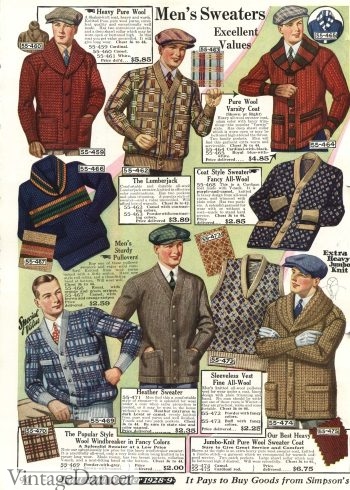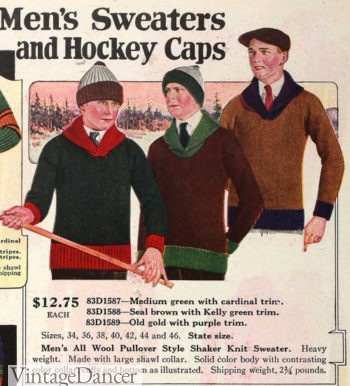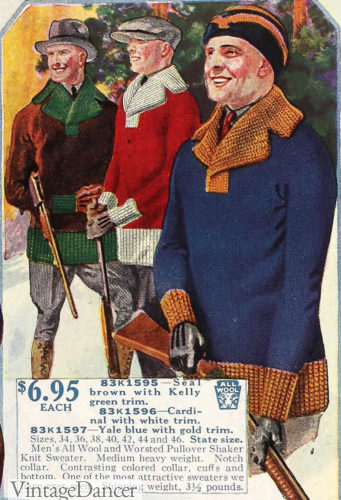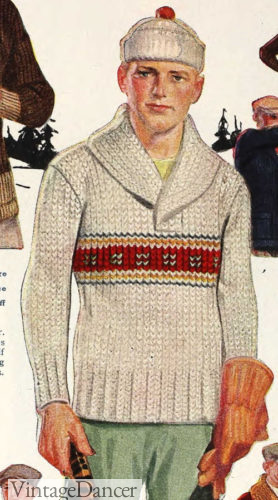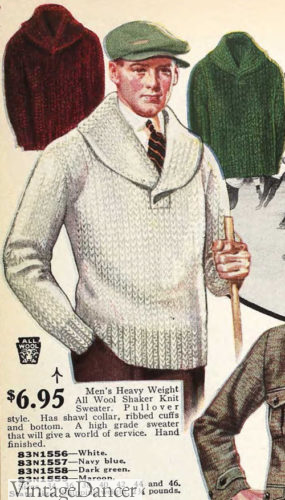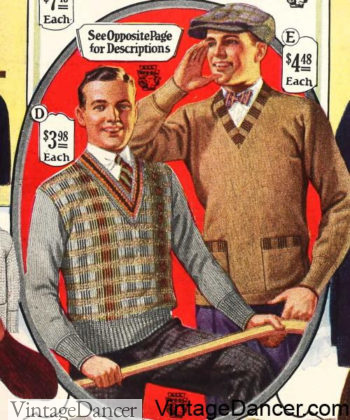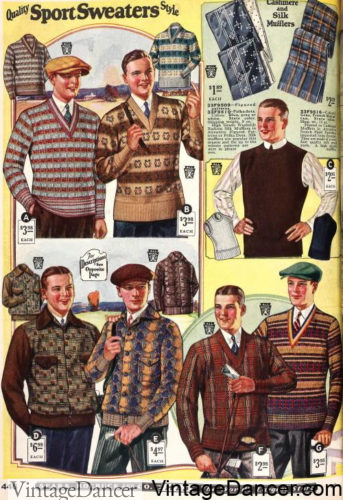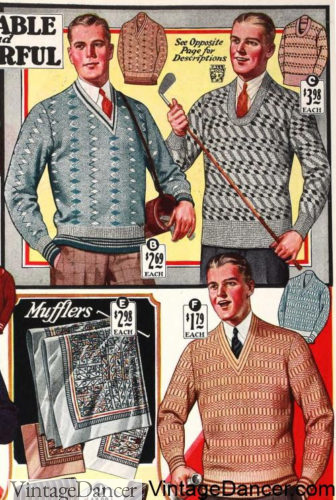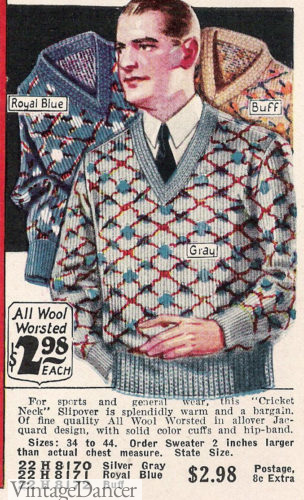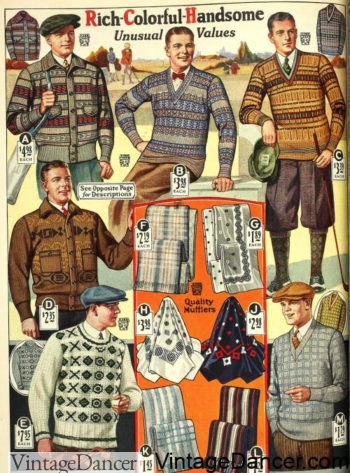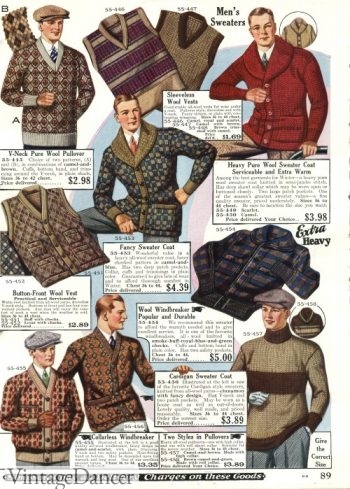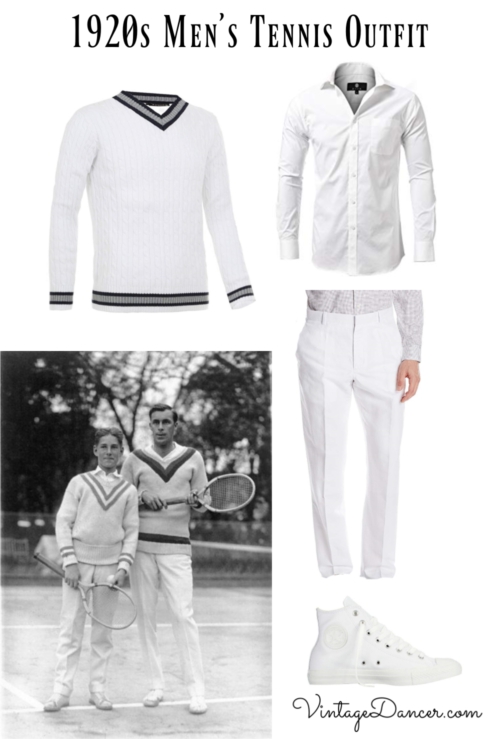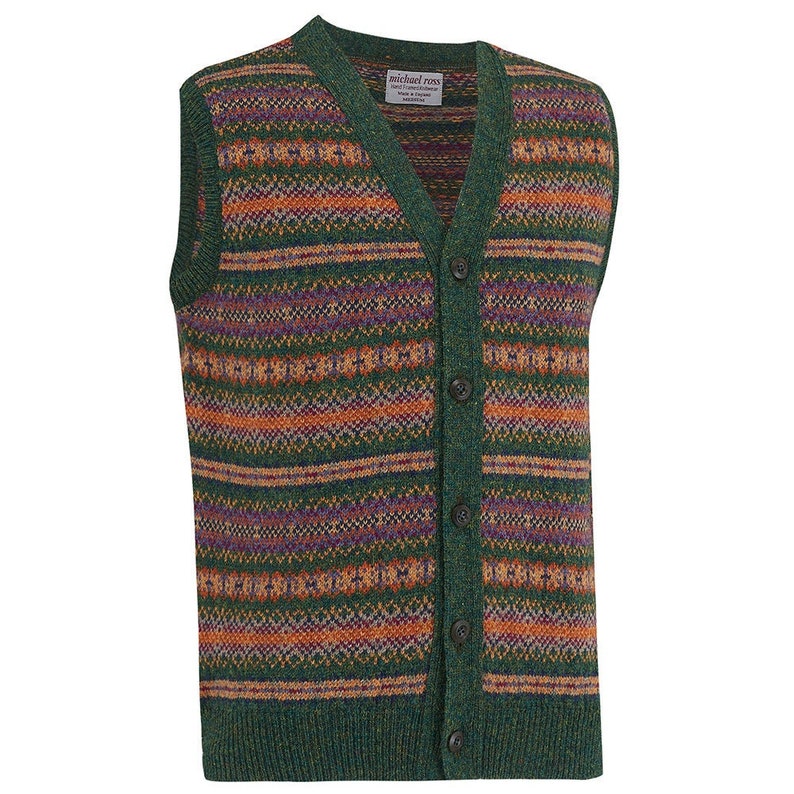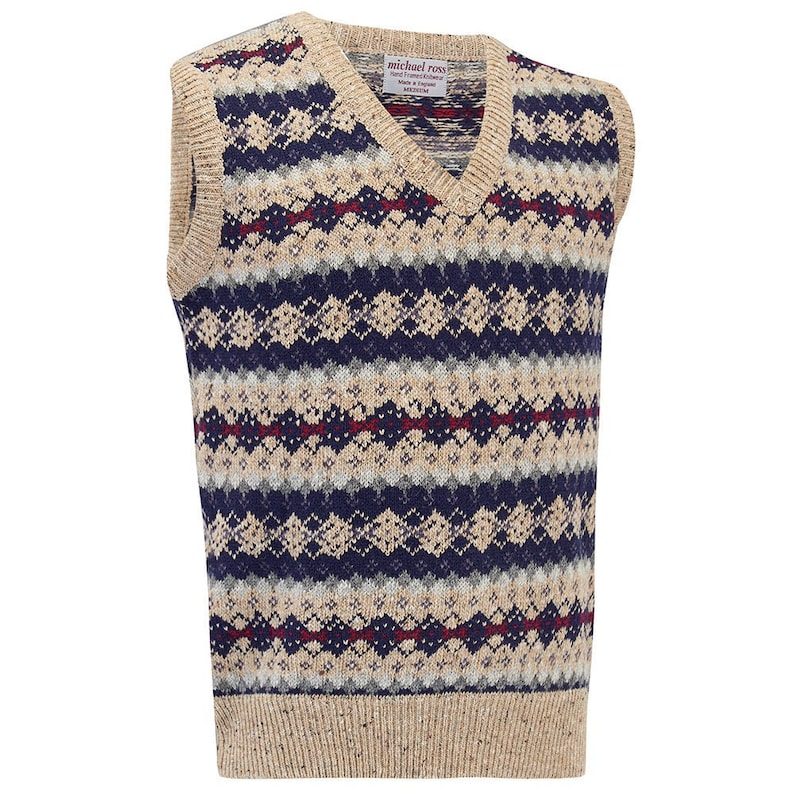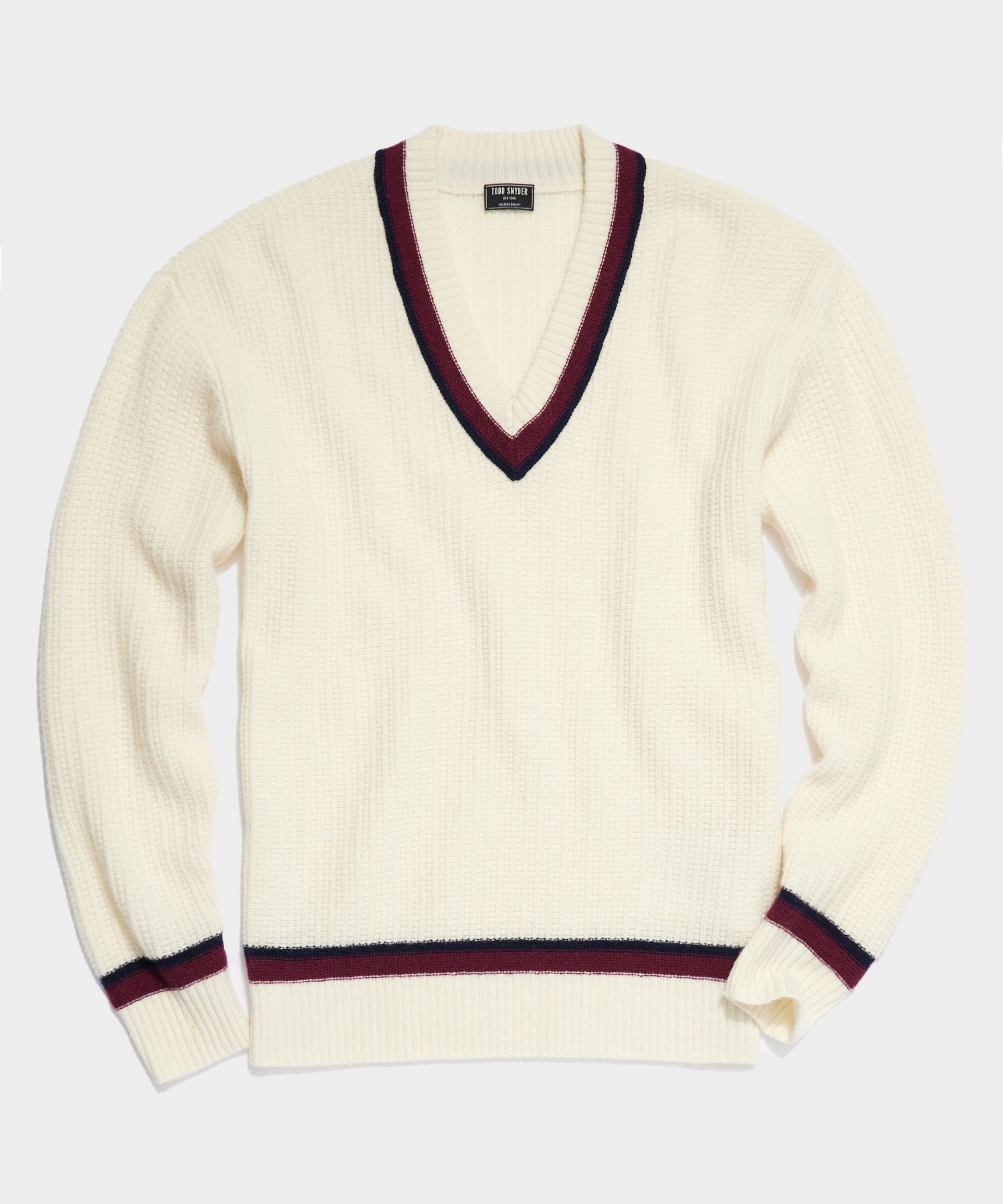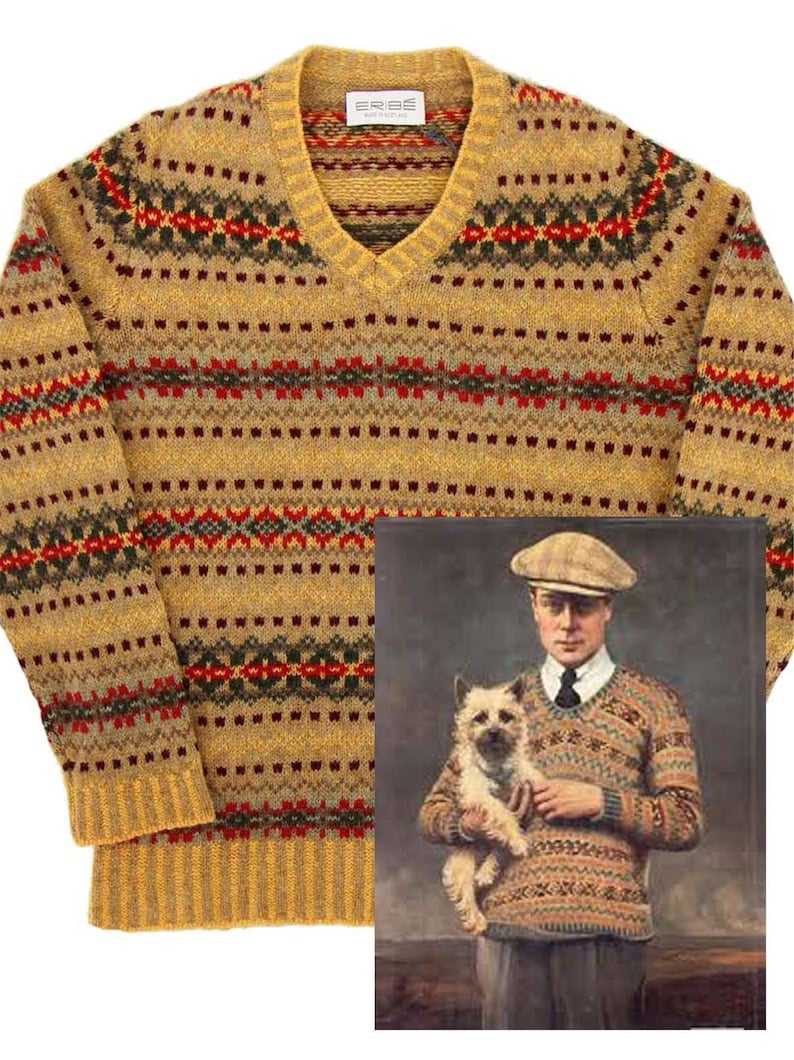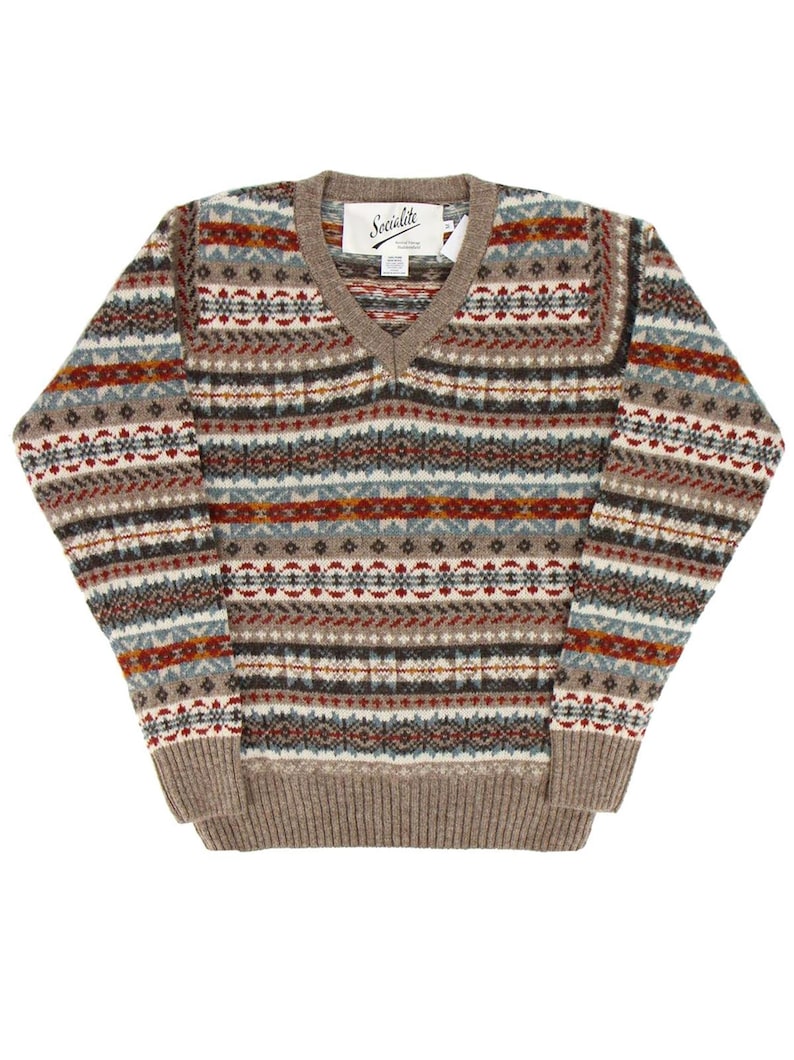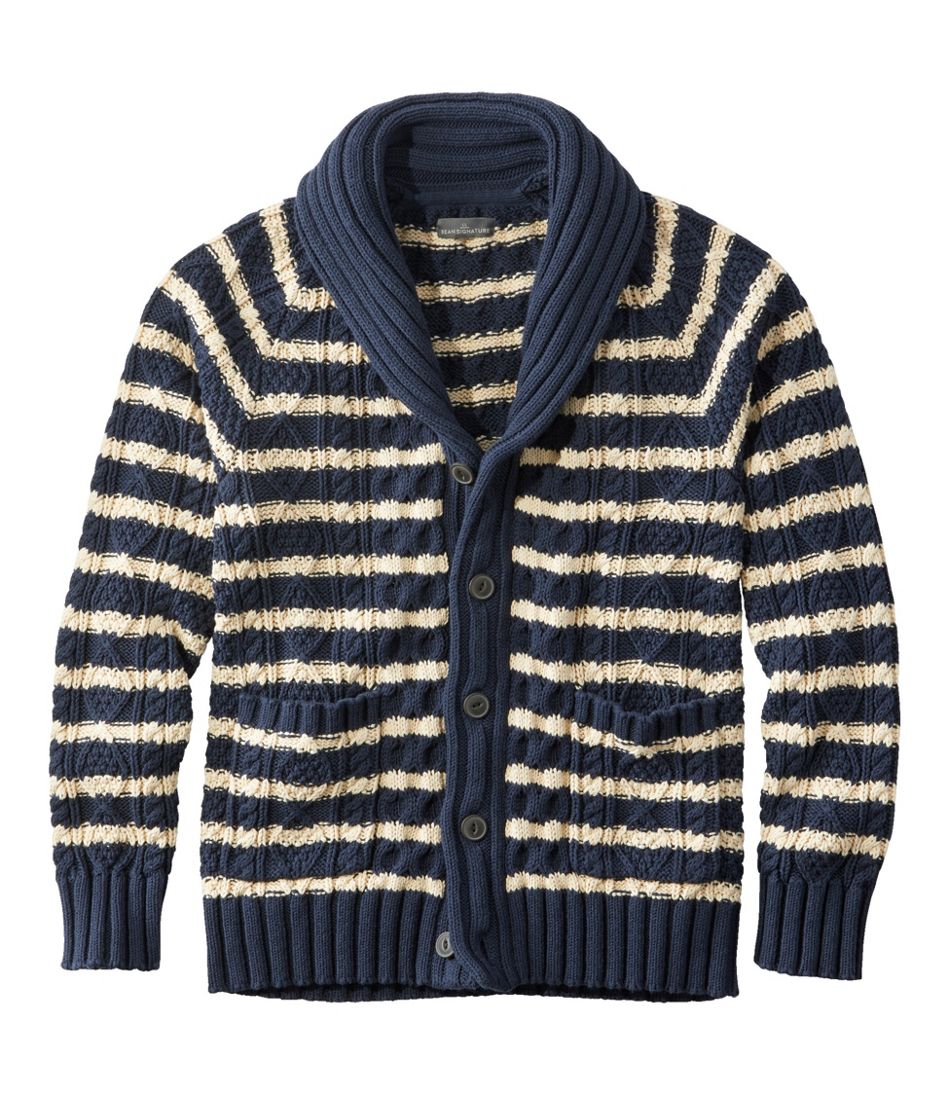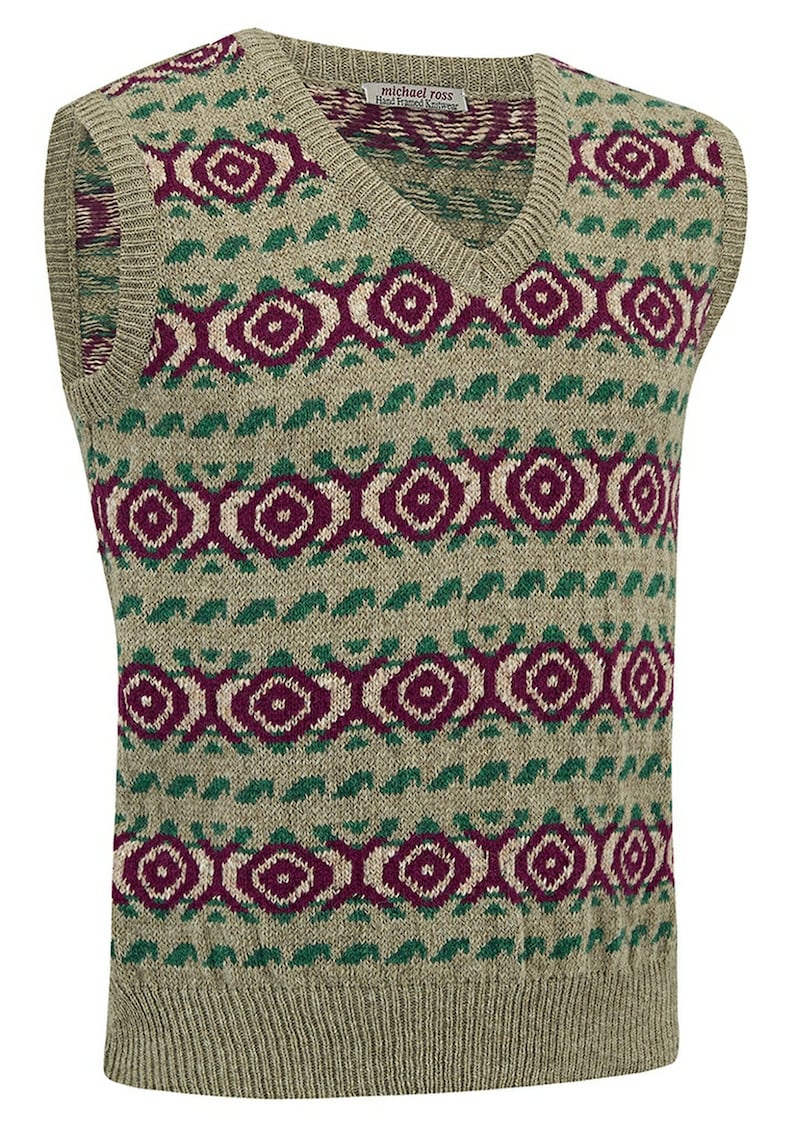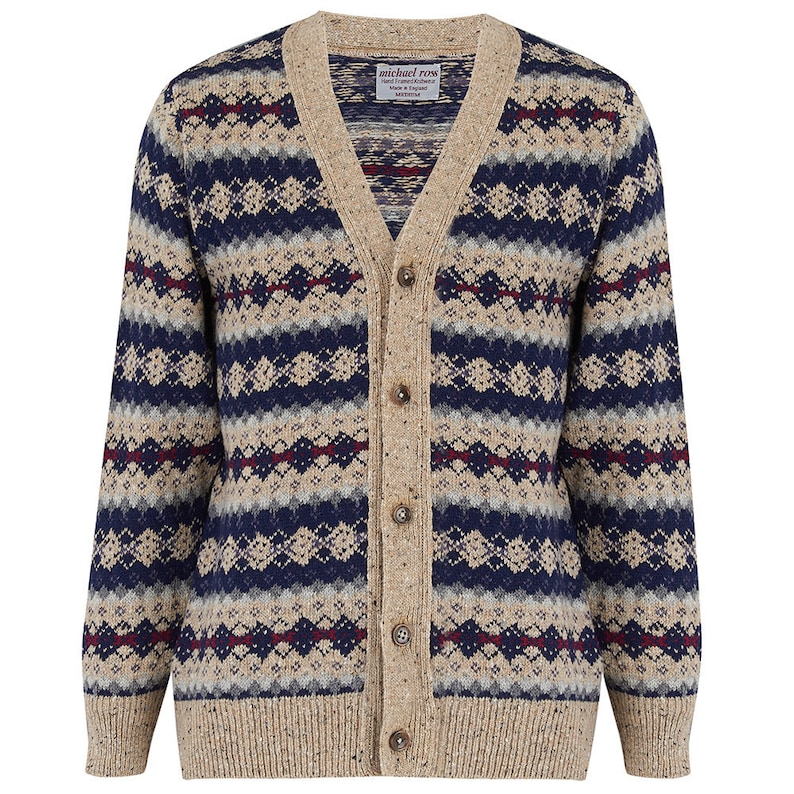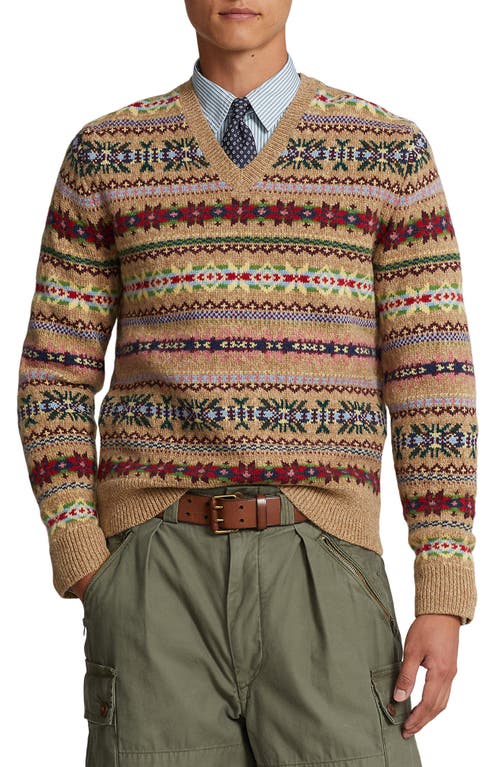Yet again, it was due to the popularity of the Prince of Wales and his fashion on the golf course, as well as the overwhelming desire for casualness in menswear, that the 1920s men’s sweater (1920s men’s jumper) replaced the sporting coat and blazer of the early 1900s. Softer, warmer (or cooler depending on the knit), and more affordable, it was loved by all classes — working class and gentlemen equally.
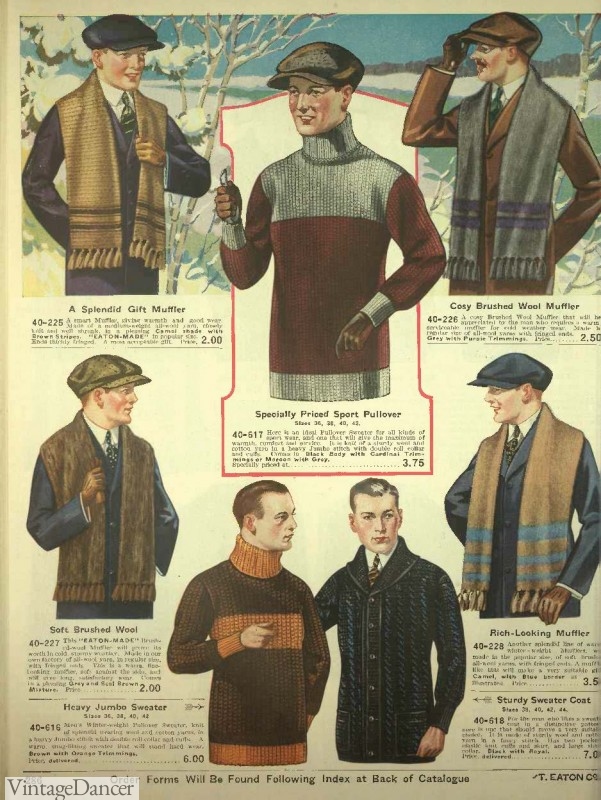
1920s Men’s Wool Knitwear- Winter Sweaters / Jumpers and Scarves
Men’s 1920s Winter Sweaters
Turtleneck pullovers or jersey sweaters / jumpers were popular in the previous decade, and remained in fashion with men for the first few years. The “roll neck” was renamed in the mid ’20s to “turtleneck,” and some new life was breathed into the old style. Actor Noel Coward wore one under a blazer in the play Vortex, inspiring the next generation of knit shirts in the 1930s.
Knitwear came in solid colors as well as with sporty wide stripes across the chest. Navy blue and orange, red and yellow, grey and maroon — color combinations were often tied to a team sport or college colors.
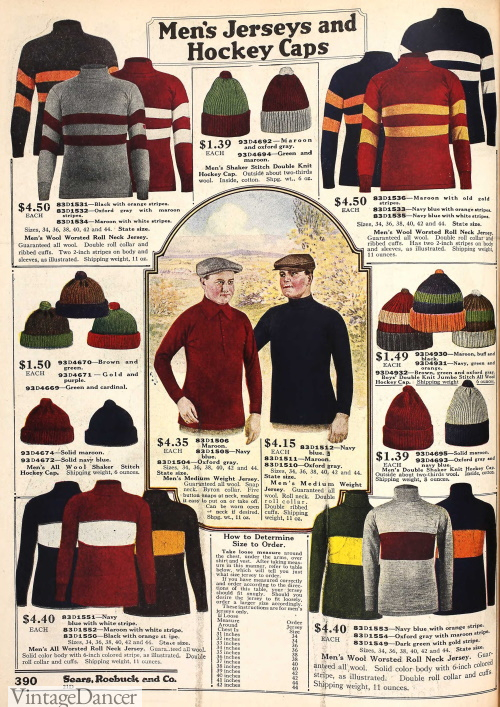
The men’s heavy knit wool sweater was fashioned after fishermen from Normandy. It was worn as a layer under even heavier raincoats. Despite its working-class beginnings, it suddenly became popular when the British (and especially French) adopted and adapted the style. The French gave the sweater its name, or rather three names for each eight weight:
- The “sweater” is a lightweight wool knit garment.
- The “pullover” is of a warmer medium weight and pulled on overhead.
- The “chandail” is a heavy wool worn by vegetable sellers in French markets – a favorite style with Picasso and artistic types.
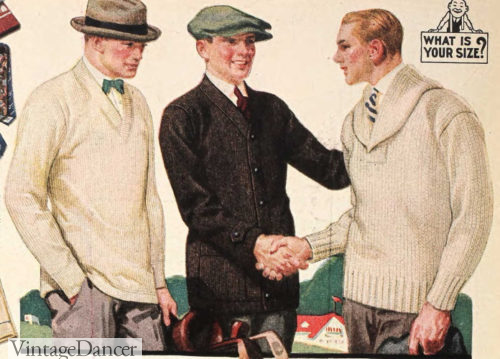
1923 Light V-Neck Pullover, Medium Weight Cardigan, and Heavy Shaker Knit Shawl Collar Sweaters / Jumpers
Sweaters / Jumpers came in a variety of styles to go with each weight. The heavy Shaker shawl collar sweater-coat with thick waistband and cuff ribbing was a favorite throughout the decade. It was especially common in shades of brown.
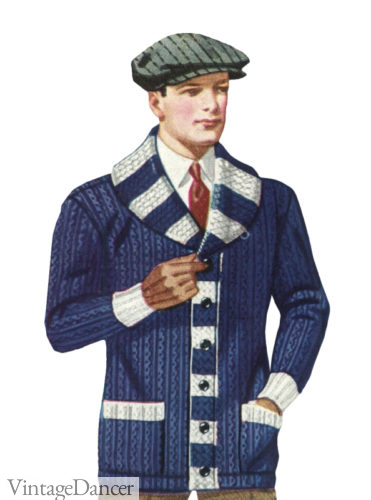
1928 Varsity Style Sweater-Coat
College men adopted it, wearing college colors and letters on the front pockets. The shawl collar could be folded up the neck and buttoned high to keep cold air out. Lighter weight versions of the button up sweater coat lacked a heavy collar and instead were of fine knit and thick ribbed cuffs and trims. This is the style that is often called a Cardigan sweater in women’s wear, and years later in menswear, too.
- 1928 Shawl Cardigans
- 1928 Men’s Sweaters – Shawl and V-Neck Cardigans
The pullover shawl collar sweater had a large rounded collar that overlapped slightly at mid sternum. With the “ruff collar,” cuffs and waistbands often came in a contrasting color against the sweater body. The shawl collar could also have notches. Off-white or cream was a very trendy color dressier outfits. Worn over a shirt and tie, it replaced a coat or suit jacket for most casual and sportswear outfits.
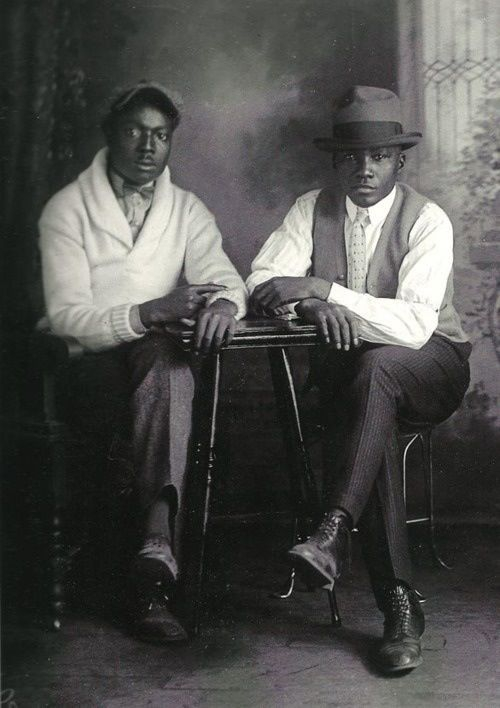
Sweaters, Vests, Trousers, and Hats
- 1920 Contrasting Shawl Collar Sweaters
- 1922 Men’s Notch Shawl Collar Sweaters
- 1922 Hockey Sweater with Knit Stripe Ski Pattern
- 1923 White Shawl Collar Sweater
Cardigan Sweaters
As mentioned earlier, the cardigan sweater was called a sweater-coat in the 1920s. The shawl collar cardigan was the most popular style in the first half of the decade, and the V neck style in the second half. Sweater-coats buttoned up the front with two pockets on each side of the hip. Most were collarless, but there was a notch collar version in the late 1920s.
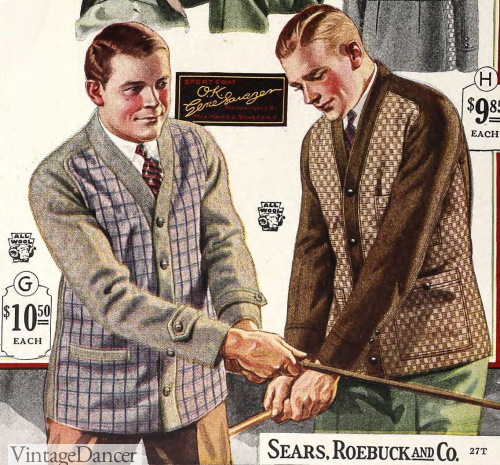
1924 Pattern Contrast Cardigans
Initially, the two tone cardigan sweater or solid and pattern combination cardigan was trendy alongside Fair Isle and small pattern pullovers. The fad quickly moved on in favor of plain color cardigans in earth tone colors.
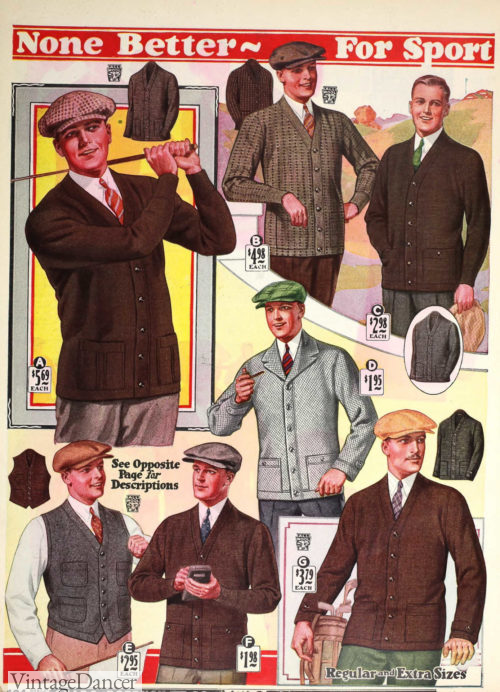
1928 Plain Cardigan Sweaters
The sportiest of the sweater-coats was the 4 pocket knit coat. The pleated pockets, button up style, and knitted wool combined into a stylish and practical 20s knitwear. They were especially popular as workwear or sports such as golf, where the pockets were used to hold small items.
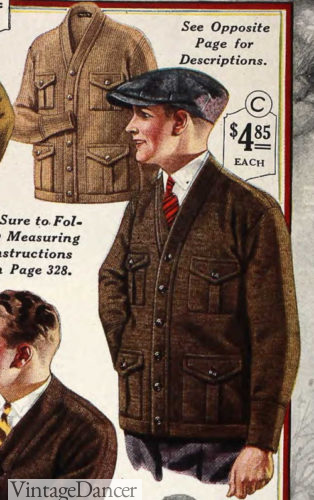
1924 Men’s 4-Pocket Knit Sweater-Coat
There were many other men’s casual coats and jackets made with knitwear instead of fabric. The two pocket knit-jacket seen below combined the best of both worlds.
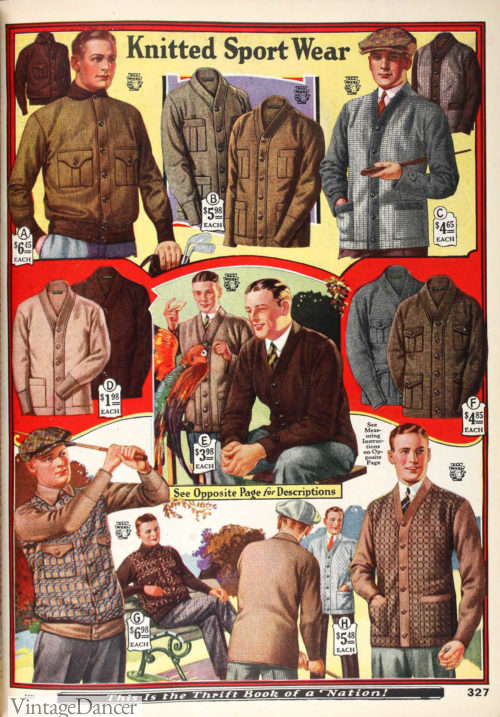
1925 Knit Cardigans and Sweater-Coats
Men’s Pullover Sweaters
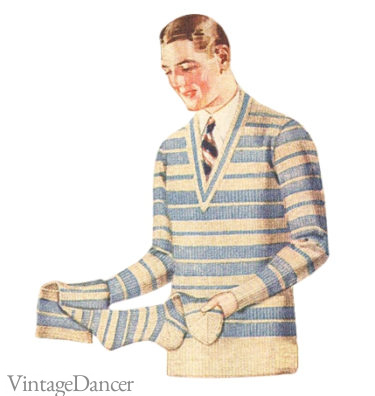
1926 Men’s V-Neck Pullover Sweater
The pullover sweater with a V-neckline, called a cricket neck, was hugely popular among the “flaming youth.” They were available in heavy and light weights in what was a true spectacle of bright colors and loud patterns. One reporter said they were “bright enough to stop traffic.” These vibrant colors were tans, greys, canary yellow, orange-brown, sky blue, royal blue, and emerald green. Patterns were large checks, zig zags, plaids, jacquard, and wide horizontal stripes. Necklines could be striped vertically, horizontally, or in a chevron pattern.
- 1925 V-Neck Sweaters
- 1926 V-Neck Sweaters and Sweater Jackets
- 1928 V-Neck Sweaters
- 1927 Diamond Pattern Sweaters
One brief trend in the mid-1920s was for gaudy diamond pattern sweaters. A blue diamond pattern against a mauve background is one such example of clashing colors. These certainly made a statement, but as with all fads, they quickly left again. By the late 1920s, the trend was for small patterns in still gaudy, but tamer, color combinations.
The Fair Isle sweater is one of these more reasonable patterns. It came in a V-neck pullover style with patterned stripes where each row was a different pattern. They were busy but festive. The Prince of Wales wore them on and off the golf course, so naturally, all men followed.
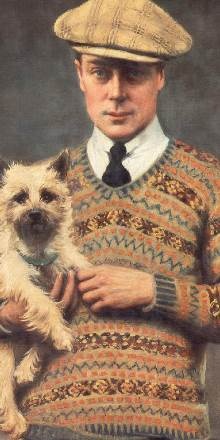
The Original Fair Isle Sweater Worn by the Prince of Wales
- 1927 Fair Isle Sweaters and Cardigans
- Late 1920s Sweaters were Full of Patterns and Textures
Beside big patterns losing favor, the V-neck also became “last season” when the round crew collar swept college campuses on the East coast. Unlike modern crewnecks, the ’20s crewneck sweater had a deeper scoop, leaving room for the wide collars and neckties to show through.
Colors were still bright, but with many mid-shades of blues and greens to soften them. The solid color sweater also came back again in the late 1920s, giving up patterns altogether when going into the 1930s. The texture favored vertical ribbing over smooth finishes. The ’20s crew neck sweater would soon lead menswear into the crew neck T-shirt revolution of the ’40s and onward.
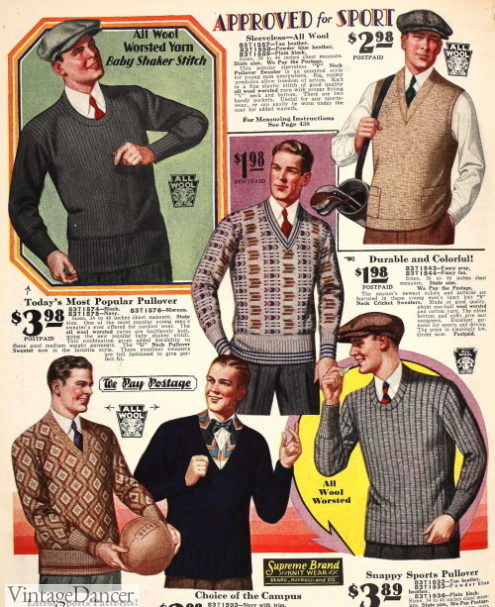
1929 V neck sweaters and round scoop necks
Tennis Sweaters
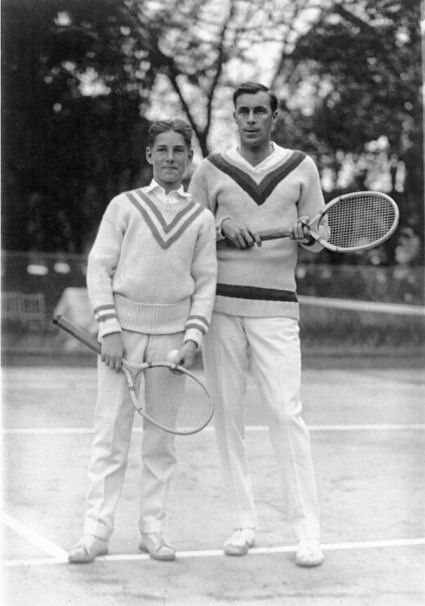
Traditional Men’s Tennis Sweaters with V-Striped Trim. White Duck Cloth Pants and Oxford Shoes Complete the Look
Besides golf, men’s sweaters were adopted by all sportsmen. The cricket sweater with vertical cable knit cream or white panels and contracting blue or grey V-neck trim in Britain became a classic men’s tennis sweater in the USA. Tennis star Bill Tilden wore them before and after games, making it the most common publicity look for him.
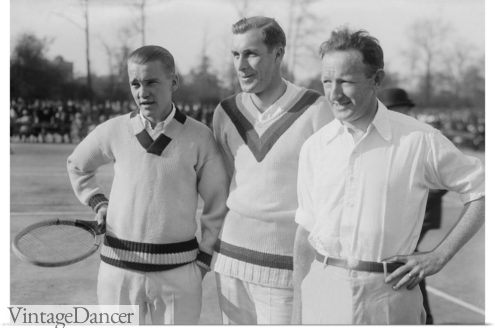
Bill Tilden’s Traditional Sweater (Center), and White Rolled Sleeve Shirt with Unbuttoned Collar
The tennis star look was adopted by all upper class men as a summer casual uniform. The white sweater was too easily dirtied for working class men, who preferred the more rugged Fair Isle and small print sweaters. Learn more about 1920s tennis clothes.
New 1920s Sweaters
Having a 1920s casual wardrobe must include a sweater / jumper knitwear. Fair Isle sweaters are the most iconic to the decade, but as you have read, there are many others to consider. These new sweaters are close-enough to the roaring twenties’ styles for most of your outfit needs:
Read More
- Men’s Vintage Sweater Vest History 1910s,1920s,1930s, 1940s
- 1920s Men’s Coats and Jackets
- The Prince of Wales – A 1920s Fashion Icon for Men
- 1920s Tennis Clothing for Women and Men
- 1930s Men’s Casual Clothing
- 1910s Edwardian Working Class Clothing
Debbie Sessions has been teaching fashion history and helping people dress for vintage themed events since 2009. She has turned a hobby into VintageDancer.com with hundreds of well researched articles and hand picked links to vintage inspired clothing online. She aims to make dressing accurately (or not) an affordable option for all. Oh, and she dances too.

